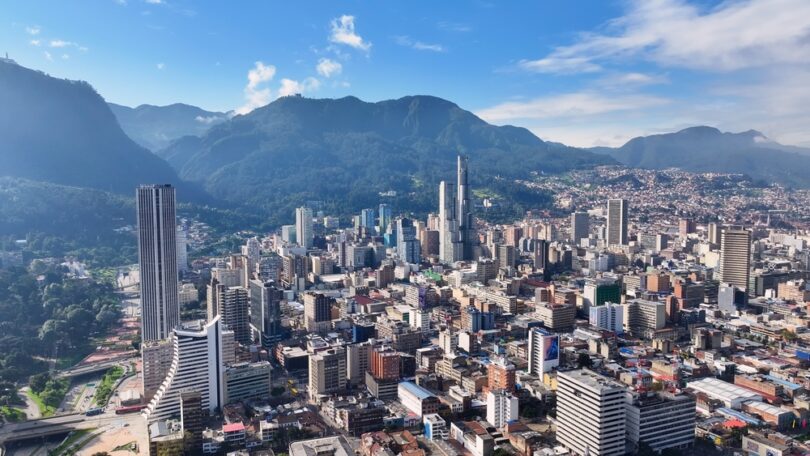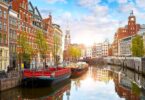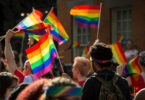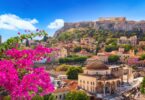Bogotá is a lively capital city known for its long history, diverse neighborhoods, and thriving cultural scene. From colonial architecture and world-class museums to bustling markets and scenic mountain views, the city offers something for every traveler. Whether you’re exploring historic La Candelaria, sampling traditional Colombian cuisine, or taking in the views from Monserrate, here’s what you need to know to make the most of your Bogotá visit.
What’s the Best Time to Visit Bogotá?
Bogotá has a cool, spring-like climate year-round due to its high altitude, so there’s no bad time to visit weather-wise. However, the driest months — January, February, July, and August — are popular for tourism because they have less rain. If you want to avoid crowds and get better deals on flights and accommodations, consider traveling in the shoulder months, such as March, April, September, or October. Keep in mind that Bogotá hosts major festivals like the Ibero-American Theater Festival (held every two years) and the Rock al Parque music festival, which can make the city livelier but also busier.
What’s the Cheapest Month to Fly to Bogotá?
The cheapest month to fly to Bogotá can vary depending on factors such as availability, how far in advance you book, and the specific days you’re traveling. However, flights tend to be more affordable during the low season, typically from April to May and September to November, when fewer travelers visit. Booking well in advance, flying midweek instead of weekends, and being flexible with your dates can further increase your chances of finding a good deal.
How Far in Advance Should I Book a Flight to Bogotá?
For the best prices on flights to Bogotá, experts generally recommend booking at least two to three months in advance. If you’re traveling during peak seasons, such as December or around major holidays and festivals, booking even earlier — up to four to six months ahead — can help you secure lower fares. Last-minute deals are sometimes available, but they can be unpredictable, so planning early is usually the best strategy for saving money.
How Many Days in Bogotá Is Enough?
Three to four days in Bogotá is usually enough time to explore the city’s main attractions, including La Candelaria, Monserrate, the Gold Museum, and the Usaquén neighborhood. If you’re interested in taking day trips to nearby attractions like the Salt Cathedral of Zipaquirá or Guatavita Lagoon, you might want to add an extra day or two. Bogotá’s cultural scene, museums, and restaurants make it easy to fill a longer stay, but a well-planned short visit can still be very fulfilling.
How Can I Save Money on a Trip to Bogotá?
To save money in Bogotá, opt for public transportation such as the TransMilenio bus system instead of taxis or rideshares. Eating at local markets, small eateries, and bakeries can be both affordable and delicious. Many of the city’s top attractions, like Monserrate and public museums, have free or low-cost entry on certain days. Booking flights in advance, traveling during the low season, and staying in locally owned guesthouses or hostels can also help keep costs down.
You Might Also Enjoy: Lima Travel Brief: What to Know Before You Go
What Are the Cheapest Airports to Fly into in Bogotá ?
Bogotá is served by El Dorado International Airport (BOG), which is the primary and only major airport in the city for international and domestic flights. Since it’s the main hub, it usually offers the most competitive ticket prices compared to smaller regional airports in Colombia,. To find the best deals, consider searching for flights with layovers or using budget airlines that operate at El Dorado.
FAQs:
Q: What are the must-see attractions and activities in Bogotá?
A: La Candelaria, the city’s historic district, is home to colorful colonial architecture, museums, and plazas. The Gold Museum (Museo del Oro) showcases an impressive collection of pre-Columbian gold artifacts, while the Botero Museum features works by the famous Colombian artist Fernando Botero. A visit to Monserrate offers breathtaking views of the city from a hilltop church. For a more local experience, wander around the Usaquén neighborhood, explore the bustling Paloquemao Market, or visit Simon Bolívar Metropolitan Park.
Q: What are the best neighborhoods to stay in in Bogotá?
A: La Candelaria is popular with history lovers and budget travelers due to its colonial charm and proximity to major attractions, but it can be quieter at night. Chapinero, especially Zona G, is known for its trendy hotels, restaurants, and nightlife, making it a great choice for foodies. Zona Rosa (Zona T) is one of the safest areas in the city, with upscale hotels, shopping, and nightlife options. Usaquén offers a more relaxed atmosphere with boutique accommodations and a charming colonial center. If you’re looking for a more local experience, neighborhoods like Parque 93 or Chicó provide a mix of residential comfort and access to restaurants and cafes.
Q: What are the local transportation options in Bogotá?
A: The TransMilenio bus system is the city’s most extensive public transit option, with dedicated lanes to avoid traffic, but it can be crowded during peak hours. SITP buses and colectivos (smaller buses) serve additional routes. Ridesharing apps like Uber, Didi, and Cabify are widely used and considered safer than hailing street taxis. Walking is a good option in certain neighborhoods like La Candelaria or Zona T, but distances between attractions can be long. Renting a bike is another way to explore, especially on Sundays during Ciclovía, when major roads are closed to cars.
Q: What are some safety tips for travelers in Bogotá?
A: While Bogotá is safer than its past reputation suggests, travelers should still take precautions. Avoid displaying valuables like smartphones and jewelry in public, especially in crowded places. Stick to well-lit, busy streets, and be cautious when walking alone at night. If using an ATM, choose one inside a bank or shopping mall rather than on the street. In public transit, be aware of pickpockets and keep bags secure. It’s best to use registered taxis or ridesharing apps rather than hailing taxis on the street. Certain areas, particularly outside tourist zones, may not be safe to explore alone, so research ahead and ask locals or hotel staff for advice. As in any major city, staying aware of your surroundings is key to having a safe visit.
Q: Which local dishes should I try in Bogotá?
A: Ajiaco is a must-try soup made with chicken, three types of potatoes, corn, and guasca herbs, often served with avocado and rice on the side. Tamales Bogotanos are large, banana-leaf-wrapped masa pockets filled with meat, vegetables, and spices. Arepas, a staple in Colombian cuisine, come in many varieties, with Bogotá favoring the simple yet delicious “arepa blanca” or stuffed “arepa boyacense.” Empanadas, deep-fried and filled with meat or potatoes, are a popular street food. If you have a sweet tooth, try chocolate santafereño—hot chocolate often served with cheese for dipping — or obleas, crispy wafers filled with caramel (arequipe) and other toppings like cheese or jam. Bogotá also has a strong coffee culture, so visiting a specialty café for fresh Colombian coffee is highly recommended.
Q: What is the altitude like in Bogotá, and how can I prevent altitude sickness?
A: Bogotá sits at about 2,640 meters (8,660 feet) above sea level, which can cause altitude sickness for some travelers, especially if they arrive directly from lower elevations. Symptoms may include headaches, dizziness, nausea, and shortness of breath. To minimize discomfort, take it slow on your first day, stay hydrated, and avoid alcohol or heavy meals early in your stay. Drinking coca tea, a common remedy in high-altitude regions, may help alleviate mild symptoms. If you’re prone to altitude sickness, consult a doctor for medication before your trip. Most visitors adjust within a day or two, but if symptoms persist or worsen, it’s best to rest and stay hydrated until you acclimate.
Q: What are the best day trips from Bogotá?
A: The Salt Cathedral of Zipaquirá, an underground church built inside a salt mine, is one of Colombia’s most famous attractions. Another popular spot is Lake Guatavita, a scenic crater lake linked to the legend of El Dorado. For nature lovers, Chingaza National Park offers hiking trails and the chance to see native wildlife. The colonial town of Villa de Leyva, known for its cobblestone streets and massive main square, is a bit farther but makes for a worthwhile excursion. The coffee-producing town of Fusagasugá provides a chance to visit an authentic coffee farm.
Did we leave out your favorite part of Bogotá? Tell us about it in the comments below!












